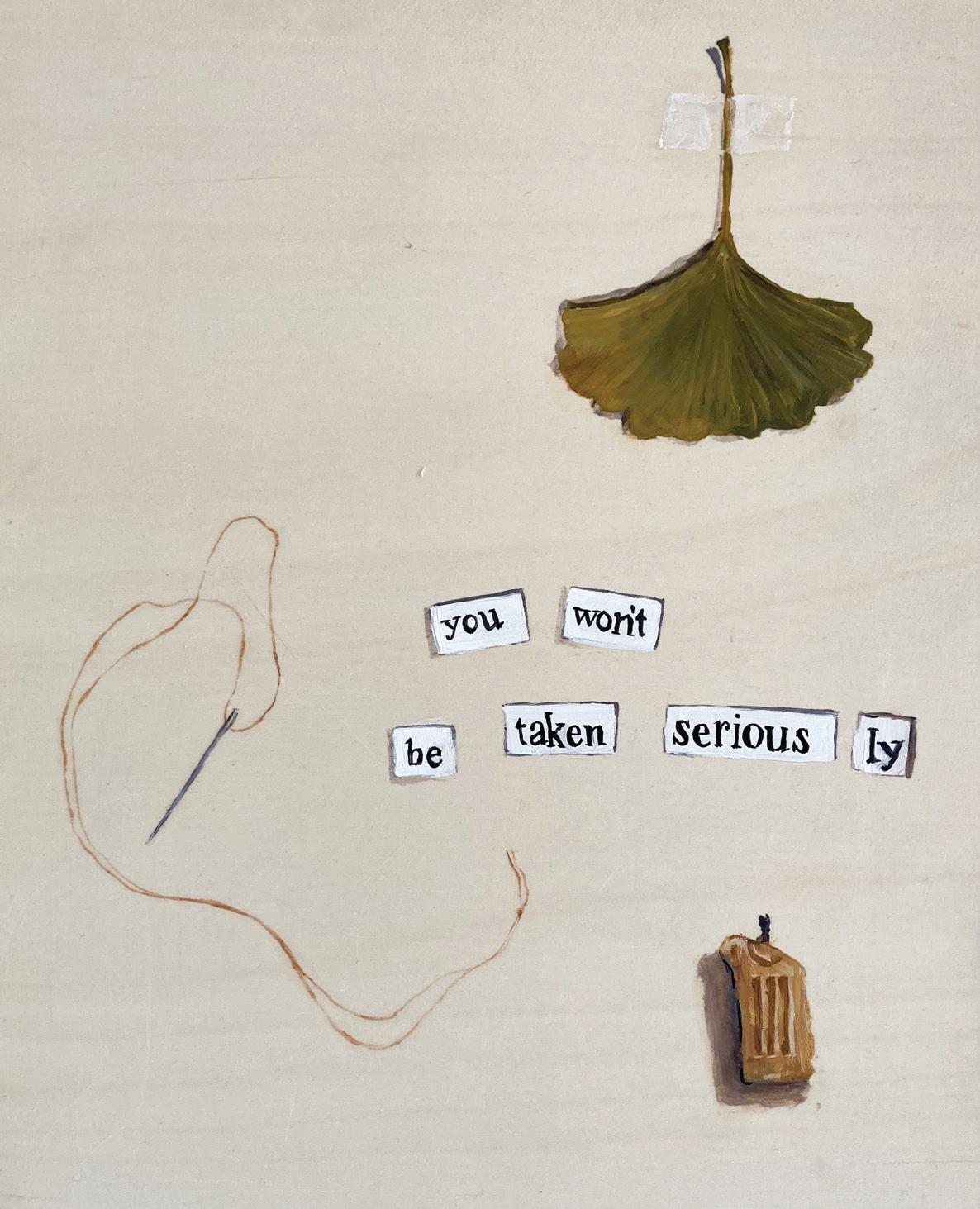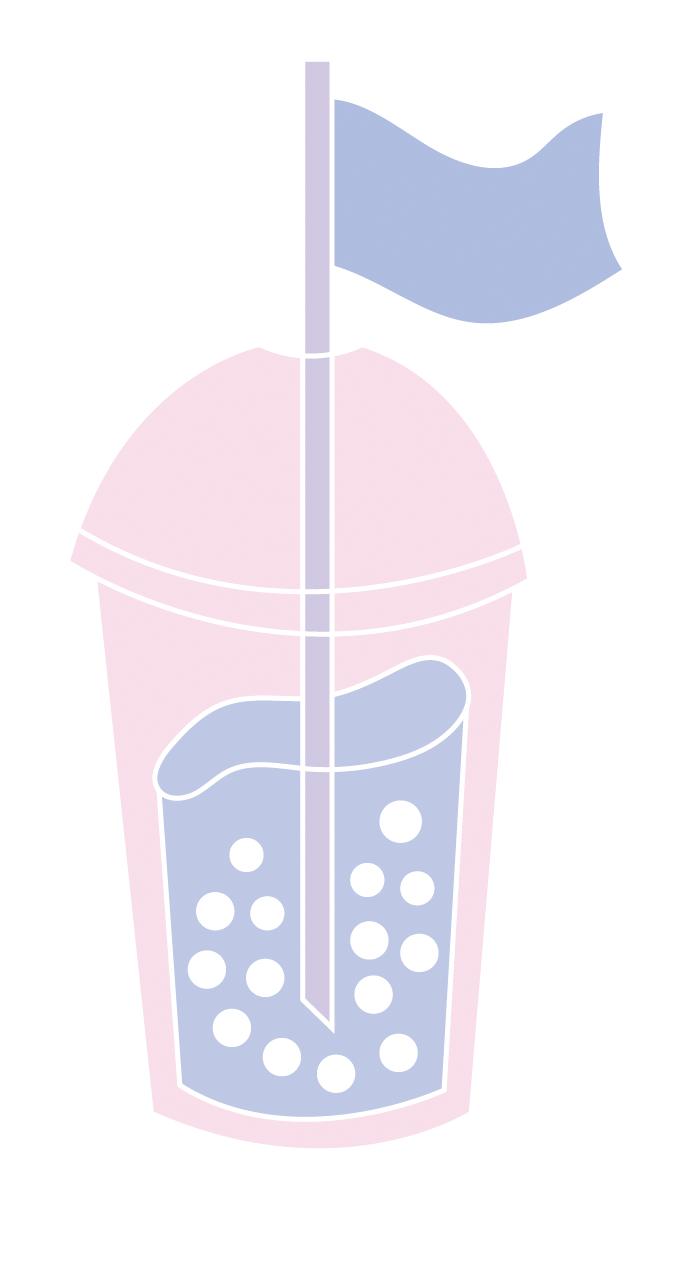
23 minute read
Australian Climate Policy Dragged Kicking and Screaming | Sacha Shaw
Australian Climate Policy dragged kicking and screaming. by Sacha Shaw How our climate and energy policies may be written by a rising tide of global climate commitments. Two events have captured international imaginations and headlines: China's announcement at the United Nations General Assembly that the country will be carbon neutral by 2060 and President Joe Biden's announcement that commits the United States to net-zero emissions by 2050. As the two biggest global economies, these declarations are significant. Australians ought to be paying attention. The US may be a significant and strategic ally, but Biden’s commitment is more the cherry on top of this wake-up call for Australia. Though it is bound to impact Australian markets, this policy shift signals more of a cultural and normative pressure. However, China has leveraged its economic influence on the Australian export market. Their latest move has been to ban all Australian coal imports, marking a significant opportunity for Australia to reconsider its dependence on coal. Other nation-states are also putting ink to paper and pledging net-zero emissions and carbon neutrality by 2050; and that list boasts some significant players, from Japan and Korea to the European Union. President of the European Commission Ursula von der Leyen in her 2020 State of the Union Addressi, called for a carbon border adjustment mechanism, saying: "Carbon must have its price – because nature cannot pay the price anymore. This Carbon Border Adjustment Mechanism should motivate foreign producers and EU importers to reduce their carbon emissions while ensuring that we level the playing field in a WTOcompatible way." Pricing carbon will disincentivise heavy emitting industries, instead favouring sectors and production processes that pollute less. This shift is also being reflected in global markets too. More and more companies are making pledges to decarbonise their operations. General Motors recently announced that they will be carbon neutral by 2040 and Apple has promised to be carbon neutral by 2030.
SOURCE: Curioso_Photography @ Pixabay
So where is Australia on the path to climate justice?
Australia’s per capita emissions are frequently ranked among the worst globally.ii Current policies advocated by the Australian Federal Government are only marginally changing this abysmal title. The Climate Change Performance Indexiii scores Australia in the worst category, keeping company with Russia, Iran and Kazakhstan.
Climate and energy policy in Australia, especially at the federal government level, has long been fraught and toxic. The attempt to pass laws on climate and energy has been a critical catalyst for the coup-like removal of the last seven Prime Ministers; turning the past 17 years in Australian politics into a constant deluge of disappointment for those concerned that Australia is not acting on the planetary climate crisis.
Spanning the Labor/Liberal divide, past governments have and continue to maintain significant and widely criticised connections to the minerals sector. Described as a ‘revolving door’iv, public servants and politicians move with impunity from positions within the government to private and vice versa in apparent disregard for parliamentary code of ethics.
Though not limited to the minerals industry, the conflict of interest is blaring. To highlight just one of many cases, take Brendan Pearson. Before entering government, he was CEO of Australia’s top minerals lobby group, the Minerals Council of Australia (MCA). And prior to his position with the MCA, he was vice president of government relations at Peabody Energyv, one of the leading private coal companies in Australia, where he got the title of “chief lobbyist”.vi
Pearson is now a senior advisor to the Prime Minister, working alongside former colleague from the MCA John Kunkel.vii
Against this background of government intransigence and denial of the climate science, occurred a catastrophic 2019/20 summer season. While well covered in the media, the severity of the fires remains difficult to describe – the overwhelming scope of the burning and death count are hard to grasp. Firefighting chiefs and health experts told the subsequent Royal Commission into Australian Preparedness that fires directly killed 33 people and smoke took the lives of 445 more.viii The death count for nonhuman animals is truly difficult to fathom, the World 'Black Summer' was a moment for reflection Wildlife Fund (WWF) reported 3 billion vertebrates were negatively affected, either killed or displaced.ix and a wake-up call 'Black Summer' was a moment for reflection and a for Australians. wake-up call for Australians. As with the wildfires that covered much of the West Coast of the United States, people were frightened that this might herald the new normal of summertime, one dominated by catastrophic fires. The links to climate change now apparent, it was thought there would be no going back. No longer could politicians maintain positions that cast doubt on climate science.
But this transformation has not born out in any change in policy. The seismic shift so many expected did not transpire. What we have seen is business as usual. In response to the Covid-19 generated economic downturn, for example, the Government, with bipartisan support, released their so-called "gas-fired recovery plan". Proponents of the plan, notably in Government and the fossil fuel sector, suggest that gas would facilitate the phasing out of other, ostensibly more emissions-intensive fossil fuels, like coal.x Critics view the plan as yet another opportunistic venture that is profiteering at the expense of a safe climate.xi
Along with committing domestic energy grids to gas, the Australian Government is also continuing to approve new coal mines. One recently approved mine in Central Queensland is expected to have an 80-year working life, bringing Australian coal into the twenty-second century.xii
Though motivated more by political than ethical interests, this – and not the shock of the fires - may, in fact, be the turning point for Australian politics. True, the fires made excruciatingly clear the ethical reasons for action on climate change, but it is the policy shifts in the international community that are actively galvanising an
Will Australian policymakers dig argument for change. Australian politicians may be forced to act not because their electors want them to, but because their political donor's (the fossil fuel in and continue lobby) economic viability is disintegrating. to support and Still there is an open question: will Australian subsidise the fossil policymakers dig in and continue to support and fuel sector, or could this signal the end of subsidise the fossil fuel sector, or could this signal the end of coal? coal? For people who advocate for climate justice and more substantial emissions reduction policies, in Australia at least, there has been a quiet optimism – dare, even hope – that this might be a turning point for the Australian economy and our relationship to the climate. ...the Australian Government is moved more by an economic Could this be the moment Australia finally flips and joins the fight against the planetary pressure than the moral climate crisis? Maybe. But this moment has conviction and duty to also revealed a sad truth – that the Australian Government is moved more by an economic protect... pressure than the moral conviction and duty to protect, not just the current and future generations of people, but also the non-human animals and ecosystems we share this world with. If it is hope I feel, it is certainly darkened by melancholy and bitter disappointment.
SOURCES
i European Commission. 2020. State of the Union Address by President von der Leyen at the European Parliament Plenary. ii University of Melbourne. 2021. Facts4Paris: Australia’s per-capita emissions remain the highest among its key trading partners. iii Climate Change Performance Index. 2021. iv Michael West. Revolving Doors – Democracy at risk v Reuters. 2009. Factbox – The world’s top coal trading companies. vi Aston, J. 2017. Brendan Pearson heads to Cambridge University. Financial Review. vii Michael West. Revolving Doors – Brendan Pearson. viii Hitch, G. 2020. Bushfire royal commission hears that Black Summer smoke killed nearly 450 people. ABC News. ix World Wildlife Fund. 2020. New WWF Report: 3 billion animals impacted by Australia’s bushfire crisis. x Gillies, R. 2020. Coalition’s gas-fired recovery a benefit to its donors. Independent Australia. xi Celermajer, D. 2020. Reaching a social tipping point to climate crisis. ABC News. xii Zillman, S. 2020. Queensland Government grants approval for state’s third-largest coal mine with 1000 jobs promised. ABC News.
Sacha is researching international norms dynamics with a focus on coal politics at the University of New South Wales Canberra Campus.
Follow the author here: Twitter: @sachshaw
Nationalism & Trauma
by Abhranil Hazra
Far too often when we analyse historical trauma in its relationship to politics, we assume that marginalised groups are natural supporters of the Left or Liberal causes. This is likely because their trauma is so great, we think that they would lean on social justice campaigns as a collective way to alleviate it. But what if they turn to far-right movements and political parties instead?
When we look into the psychology of people supporting politics in the traditional left and right binary, often the same studies tend to pop up. They assert that people who support right wing parties have lower cognitive abilities and prefer ordered, rigid hierarchies. Individuals who identify as left leaning are cited as having more developed cognitive abilities and the desire to trust a variety of sources for information.1 Marginalised communities can also become a force So, what image pops up on your mind when reading this? A wealthy senior and a strong voting base citizen of Anglo-Saxon descent watching for nationalist movements Sky News After Dark? Perhaps on the other side, a young woman of colour around the world. reading her favourite Junkee Magazine? Unfortunately, such dichotomies are far too simplistic and Westerncentric when analysing the behaviour of nationalism in the world today. The Global South however provides us with an eye opener. Marginalised communities can also become a force and a strong voting base for nationalist movements around the world.
For example, the Mizrahi Jews in Israel are an ethnic group who fled the Middle East following anti-Semitic backlash in the 1950s.2 3 However, their expectations of liberation were largely met with disillusionment.4 Instead, they faced increasing racial discrimination from the European Ashkenazim Jewish population, which had primary control over Israeli institutions.5 6
From 1950-70, Israel had a policy of tracking Mizrahi children and placing them in vocational schools while Ashkenazim children would enrol in regular high schools. 6 7 This was a process that continued the decades of historical segregation between the two ethnic groups.6 7 It was often justified by the ideological belief that Mizrahi children should not be sent to institutions of abstract learning because they were inferior to their Ashkenazim counterparts.7 While the policy has since ceased, the segregation of Mizrahi and Ashkenazim children continues to this day.6 7
Many Mizrahi Jewish activists have highlighted how their culture has been completely wiped out and replaced with European Ashkenazim culture.7 So why don’t they vote or rally behind progressive movements for their rights? How did this marginalised minority end up supporting the Right-wing Likud party, which is part of the Ashkenazim establishment?7
The answer lies sadly in the failure of the Israeli Left bloc, which largely built the Ashkenazim privileges into the Israeli state.6 Rather than take a stand against the racism and white supremacy permeating Israel’s politics, they perpetuated it.6 8 9 In Left-wing circles, both Zionist and Non-Zionist, many regard the Mizrahi people as primitive and unable to grasp the European ideals advocated by Marx and Hegel. 9 But it is the institutional racism fostered by the Ashkenazim-dominated Left bloc which pushed the Mizrahi toward the military and the right side of politics.8 According to Israeli sociologist Professor Orna Sasson-Levy, the military was the pathway for economic stability for many Mizrahi Jews.8 Current Israeli Prime Minister Benjamin Netanyahu’s anti-establishment rhetoric finds fertile ground amongst the workingclass Mizrahi base and he continues to play into the resentment shared by them.10
In a recent example of this, Prime Minister Netanyahu labelled the people organising protests against his corruption as “anarchists'' and “treasonous”.10 He also accused the protestors of being led by the so-called Ashkenazim liberal elite.10 What can be classified as a kind of right-wing populism is in fact a form of resistance practiced by the Mizrahi communities against what they call a liberal Ashkenazim elite, who persecuted and harmed them in the 1950s.
A similar phenomenon is taking place in India, where Hindu Bangladeshi refugees are fleeing to. The Hindu Nationalist Bhartiya Janata Party (BJP) has been appealing to the Namasudras, a low-caste refugee community. They want support for the elections in the Indian state of West Bengal.11 12 In their latest manifesto, they promised socio-economic empowerment for the community. However, their main trump card has been the controversial Citizenship Amendment Act which has been opposed and slammed as anti-Muslim.12 15
To many Hindu Bangladeshi refugees, the BJP’s promises of citizenship represent a ticket to safety and freedom from persecution. This sentiment, which was previously championed by the now near-extinct Left wing Communist Party in the state of West Bengal, has been the cornerstone of Narendra Modi’s campaign. 11 13 In a 2014 rally, he promised to give citizenship to Hindu Bangladeshi refugees.13 16 This effort has been met with a major improvement in the BJP’s fortune in the State of West Bengal and they are banking on it for this year’s upcoming election too.11 12

The reason for their success can be observed as two-fold. Bangladeshi Hindus have faced strong discrimination in Bangladesh, where the migration of Hindus out of the country has remained steady but growing.13 14 Migration occurred in waves after British India was divided into India and Pakistan, which led to bloodshed between Hindus and Muslims as well as the largest global migration ever seen.13 Approximately 6 million Hindus fled then East Pakistan for safety in India whilst 1.5 million Muslims fled to Bangladesh.14
However, this climate continued after partition where Hindus continued to migrate. In 1965, East Pakistan passed the Vested Property Act, which allowed the state to seize land from anyone deemed an ‘enemy of the state.13 14 In a 1997 study, Professor Abdul Barkat found that 40% of the seized land belonged to Hindus, resulting in a weaker financial position. 13 This only increased in the 1971 Independence War in Bangladesh where the Pakistani Army attacked Hindus.13 14 In Bangladesh’s history, right wing Islamists parties like Bangladesh Nationalist Party and Jamaat-E-Islami are notorious for their anti-Hindu violence.13 14
It is this legacy which has led many to flee to India and allowed Modi to appeal to them for support. Unfortunately, it has also manifested anti-Muslim prejudice and sentiment in a country with rising Hindu Nationalism. 11 13
If a shared sense of identity is perceived as being attacked, it can be shaped by dark and traumatic The common theme observed from those supporting right wing parties is that of fear. In the Western context, this is often misinterpreted as histories that need to be acknowledged. ignorance or racism that needs to be addressed by society. However, in the Global South, it points to how trauma and violence against marginalised communities can often result in increased right-wing support and racism. If a shared sense of identity is perceived as being attacked, it can be shaped by dark and traumatic histories that need to be acknowledged. It is important to realise how these stories and their nuances show that politics is more complicated than it seems. SOURCES
1 Rosenburg, Paul. 2014. "Secrets Of The Right-Wing Brain: New Study Proves It - Conservatives See A Different, Hostile World". Salon. https:// www.salon.com/2014/07/29/secrets_of_the_right_wing_brain_new_ study_proves_it_conservatives_see_a_different_hostile_world/. 2 Van Hiel, A., De keersmaecker, J., Onraet, E., Haesevoets, T., Roets, A., & Fontaine, J. R. J. (2019). The relationship between emotional abilities and right-wing and prejudiced attitudes. Emotion, 19(5), 917–922. https://doi. org/10.1037/emo0000497 3 Irenstein, Toby. 2020. "Don’t Forget The Other Mideast Refugees: Mizrahi Jews". Algemeiner.Com. https://www.algemeiner.com/2020/12/07/dontforget-the-other-mideast-refugees-mizrahi-jews/ 4 "Israel Marks Exodus Of Jews From Arab Countries". 2015. Timesofisrael. Com. https://www.timesofisrael.com/israel-marks-exodus-of-jews-fromarab-countries/. 5 Mehager, Tom. 2016. "Mizrahi Or Ashkenazi Jews: Israel's Regime Of Separation". Middle East Eye. https://www.middleeasteye.net/opinion/ mizrahi-or-ashkenazi-jews-israels-regime-separation. 6 Mehager, Tom. 2015. "Why Mizrahim Don't Vote For The Left - +972 Magazine". +972 Magazine. https://www.972mag.com/why-mizrahis-dontvote-for-the-left/. 7 Gibraltar, Cafe. 2013. "Mizrahi Culture Was Suppressed, Ashkenazi Culture Is Simply Forgotten - +972 Magazine". +972 Magazine. https:// www.972mag.com/mizrahi-culture-was-suppressed-ashkenazi-culture-issimply-forgotten/70035/. 8 Mehanger, Tom. 2020. "Yes, Mizrahim Support The Right. But Not For The Reasons You Think". +972 Magazine. https://www.972mag.com/mizrahimright-wing-ashkenazi-supremacy/. 9 Cahlili, Ron. 2013. "‘How Can This Monkey Be Talking About An Ideology That Developed In Europe?’ - +972 Magazine". +972 Magazine. https:// www.972mag.com/how-can-this-monkey-be-talking-about-an-ideologythat-developed-in-europe/69465/. 10 Noy, Orly. 2020. "How Likud's Ashkenazi Elite Became The Patron Saints Of The Mizrahim". +972 Magazine. https://www.972mag.com/likudashkenazi-elite-mizrahim-netanyahu/. 11 Daniyal, Shoaib. 2017. "Why Hindu Immigrants From Bangladesh Are A Key Component Of The BJP’S West Bengal Expansion Strategy". Scroll.In. https://scroll.in/article/845354/why-hindu-immigrants-from-bangladeshare-a-key-component-of-the-bjps-west-bengal-expansion-strategy. 12 "Nadda Launches 'Lokkho Sonar Bangla' Crowdsourcing Campaign". 2021. Telegraphindia.Com. https://www.telegraphindia.com/india/naddalaunches-lokkho-sonar-bangla-crowdsourcing-campaign/cid/1807791. 13 Daniyal, Shoaib. 2016. "Cross-Border Agonies: Dhaka's Middle-Class Hindus Lead A Dual Life Straddling Two Countries". Scroll.In. https://scroll. in/article/801326/cross-border-agonies-dhakas-middle-class-hinduslead-a-dual-life-straddling-two-countries. 14 Ashraf, Ajaz. 2017. "Interview: Hindus In Bangladesh Have Faced Ethnic Cleansing Since 1947". Scroll.In. https://scroll.in/article/847725/interviewhindus-in-bangladesh-have-faced-ethnic-cleansing-since-1947. 15 "Citizenship Amendment Bill: India's New 'Anti-Muslim' Law Explained". 2019. BBC News. https://www.bbc.com/news/world-asia-india-50670393. 16 "Bangladeshi Infiltrators Must Go Back, Refugees Welcome, Says Narendra Modi". 2014. The Indian Express. https://indianexpress.com/ article/india/politics/bangladeshi-infiltrators-must-go-back-refugeeswelcome-say-narendra-modi/.
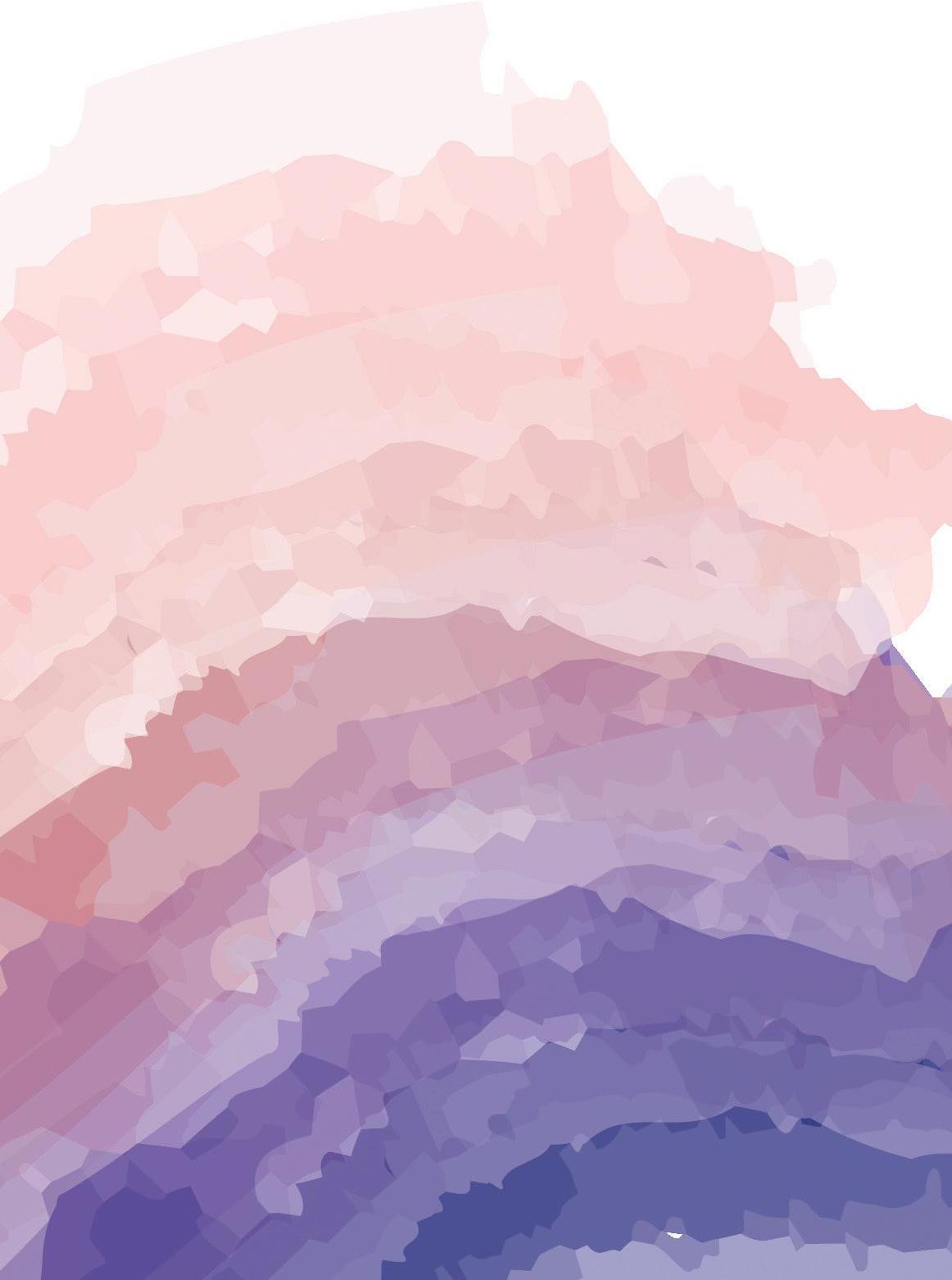
by Be lla Ziade I'm not a Garden

I am going to keep the dead flowers in my room until I feel better That way I won’t see my bed as a graveyard but rather as something that gives and lets go Blooms and buries
And though the smell of decay is not sweet Nor is it sour Perhaps it will serve as a reminder that I will always be followed by this stench that is my sadness And that there must be another place to mourn that isn’t this body
I am not a garden I am just a girl I cannot water the trees if I am thirsty too
I often think back to when I began to thaw in the summer When the light forced itself onto my face And the grass in my backyard reached my knees I would sit in it for hours writing the same poem over and over A manifestation I hoped to plant within me Believing that I could write you out of existence with sentences that grew to overcome me And I would try to pick out the weeds next to my feet But end up with handfuls of dandelions and other beautiful things
So when I realised I was hurting, and that there was nothing I could do to make it go away, I forced myself to stare at the naked body in my mirror All skin without soul All hands that don’t want to let go
I felt you between my wrinkles And in the far corners of my eye
I depersonalised into an existence where I forgave you
Who am I if I don’t love you?
My body is growing more secular every day And I can see that in my reflection So, I run myself a bath And watch my fingers prune until it I believe that they are just skin and not anything more than that
And I hear silly things in my meditations Affirmations like the way I love myself is the way I let others love me And only I can allow myself to let go But still, I grip the rough edges of the amethyst in my left palm My receiving hand has let go more than it has held Until I feel my muscles swell around the crooked rock Now my heartbeat is felt in each breath This is now the only way I know it’s still there This is the only way I know I am feeling
I have no more hiding spots No more parks or rosemary bushes to sit in And so I go to empty car parks with dirt in my hands Trying to see myself as the garden they say I am
Instead I am settling into this self that others’ use as a temporary home Where the guests lick their plates clean and always ask for more And I know that goodbyes are hard So, I don’t ask them for one when they leave Instead, I frame photos of them on the walls I keep having to build Now my mind is a long hallway of faces I will never forget
I’m a haunted house with the windows open And the lights always on I’m a house fire waiting to burn A warmth is inside me that cannot be touched
I have tried to decorate the absence I live with Fairy lights and candles and art I have tried to find beauty in grief But it sits on the windowsill next to my dying flowers
I’m still learning how to not love you
When my hair gets oily and I leave it for a few days in a bun All grease and pillow sheets Kept secrets and chipped nail polish This is when I think of you the most And with the mirrors steamed in my bathroom I fingerpaint a smile on my face And I watch myself bleach every strand on my hair that you may have touched
Tonight, I am the dirty laundry sitting in the corner of my room But I’m telling myself it’s okay I don’t need to be clean right now I have nowhere to go I have no one to see I can’t leave without a mask on anyways I can paint my skin I can hide this
I know I’m not a garden because my soil is poisoned Nothing grows where I live I have never loved without getting hurt Even if I burn my skin in the sun just so that the light feeds you I will still have to carve and cut your roots out of me when you leave And stick band aids on the wounds that bleed
I am in an introverted war And I think I might lose
But I know that I will remake myself tomorrow morning I am planting seeds in the part of me that I have never met before
I will fold myself into origami and avoid the rain Just to hide the self that is too scared to face you Unloving you is messy
I am so used to trying on new faces to keep up with the people I’m becoming
Isabella Ziade is an emerging writer and psychology student at UNSW. Her writing reflects her melancholy and gives her a branch to digest and communicate her experiences.
Follow her on Instagram @BELLAZIADE





Body Horror

by Juliet Manolias
You extend your pinkie fingers first. A herculean task, but you manage it fine, and decide to toy with the idea of freeing the rest in succession. They were clenched into fists for so long that your joints are stiff, and each movement makes you far too aware of the sensation of bone scraping against bone, although it’s hard to tell which parts you’re imagining. Your mind projects a creaking sound as each joint, one after the other, locks into its final position. This is probably better than whatever sound they would make if you were ever able to hear it, you think. You’d much rather that your body was a well-oiled machine, as people like to joke, rather than this mass of meat, string, and bone that you are wholly unsatisfied with. You stare at your now-open palms, trying to pinpoint every vein that’s forced you to stay alive through this. You wonder how they’d look with the skin peeled back.
You feel like you have taken a beating, but where from? Who from? Are there bruises on your skin or is your ego so inflated that it’s become alive in its own sense? This feels too real to be an illusion, a magic eye picture stretched across your skin. Maybe you were wrong. The beating comes from the inside. The body, whole with the fragmented head, is a slave to the mind. A poorly played puppet in the performance of life.
Today feels oddly good. Is it reasonable to call it normal? A day that is normal for most isn’t normal for you. But who gets to decide whether “normal” is relative or not, anyway? Maybe you do. You feel like you could accomplish anything today, but the freedom of motivation and energy is starting to feel crippling. Having so much choice has become foreign to you, and your decision-making muscles are so underworked that you feel the opportunities slipping away. The paralysis doesn’t leave you until you are already well into the night and so exhausted from disappointment that your body asks to be paralysed in a different way; sleep. It arrives somewhat easily but the feeling you get as you sink into slumber feels much too similar to that of guilt.
The clock is constantly ticking. This shouldn’t be a surprise to you, but somehow it always is. The passage of time both eludes you and manifests itself as a constant worry. It makes sense, right? To fear something so constant and unavoidable, something so far out of your control. Always running out. You just need more. If only you had more. What would you even do with more? Waste it, probably.
Microscopic waves rush along your limbs, their energies colliding in a well that makes your sternum ache with its weight. Each wave leaves a trace, as skin changes texture from smooth to rough and becomes alive with scattered sensation. A cascade of hairs standing on end, like a constant wind has suddenly stopped, having received the message that something is deeply wrong. Your skin cells agitate in succession. Unsettled, bracing for attack, as they are unable to move in toward the safety and warmth of the body. A fragile armour is forced into being. To protect against… what?
Your quick breaths whistle out through gritted teeth. Your blood boils but the air being pulled and pushed out of you is an icy rapid that collects no heat to cool your head. All you want is some sense of control. You try to slow your breathing; you make yourself choke. An immense weight is crushing from all sides, enveloping and constricting you. It becomes harder to stand as your lightheadedness drags you to the floor. You curl your body into a tight ball and bury your head in the middle. You block out the world and attempt to regress far into your mind, past any coherent thought and emotion to find the centre, the most innermost of inner peace. It becomes darker and darker, fading from quiet to silent. The only sensation you register is that of your burning clenched fists. They are your connection to the outside world, a recognition of reality, so that you don’t get lost.
Juliet is a Science/Arts student studying Biology and Creative Writing. Her need to finish creative works quickly has combined with a lack of an ability to complete large personal projects, resulting in a habit of writing microfiction. She is also a visual artist and hopes to work all three of these interests into parts of her career.
I thought you lacked emotion; You didn't think of me at all.
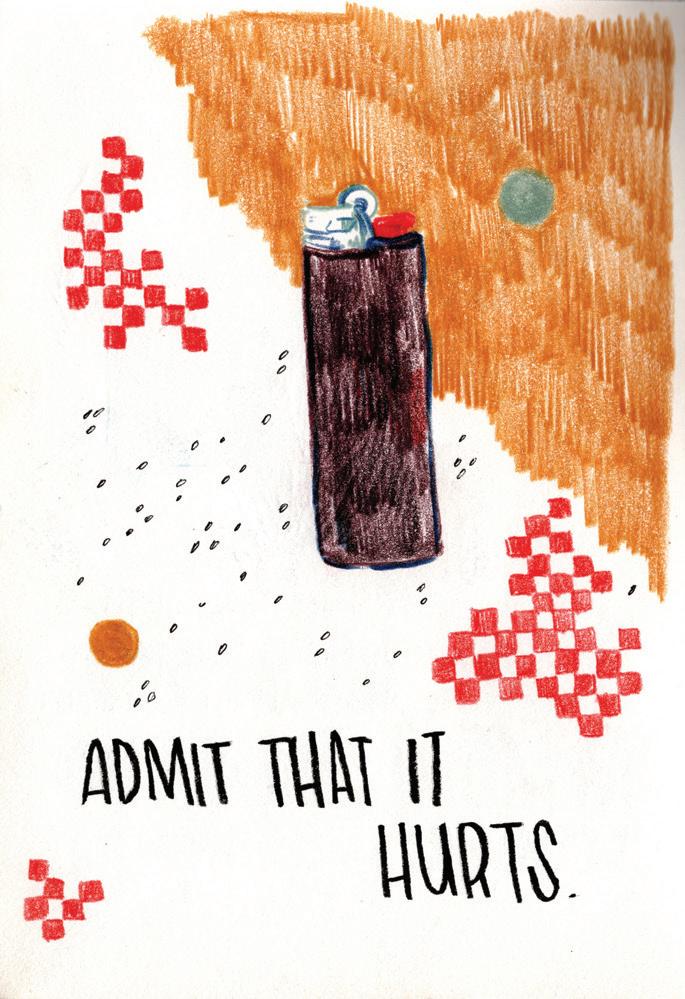

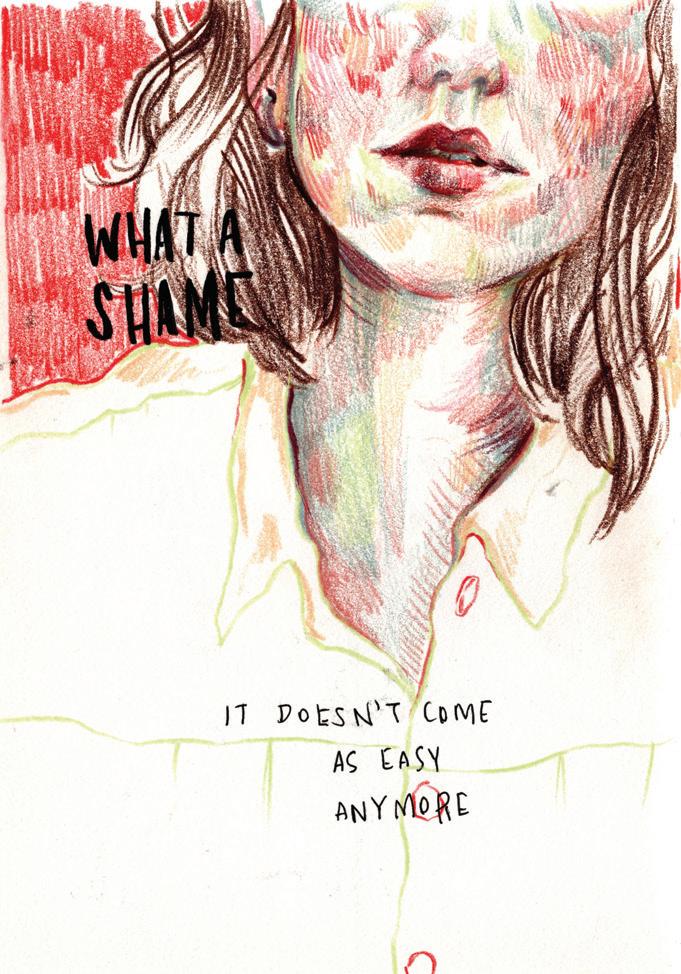

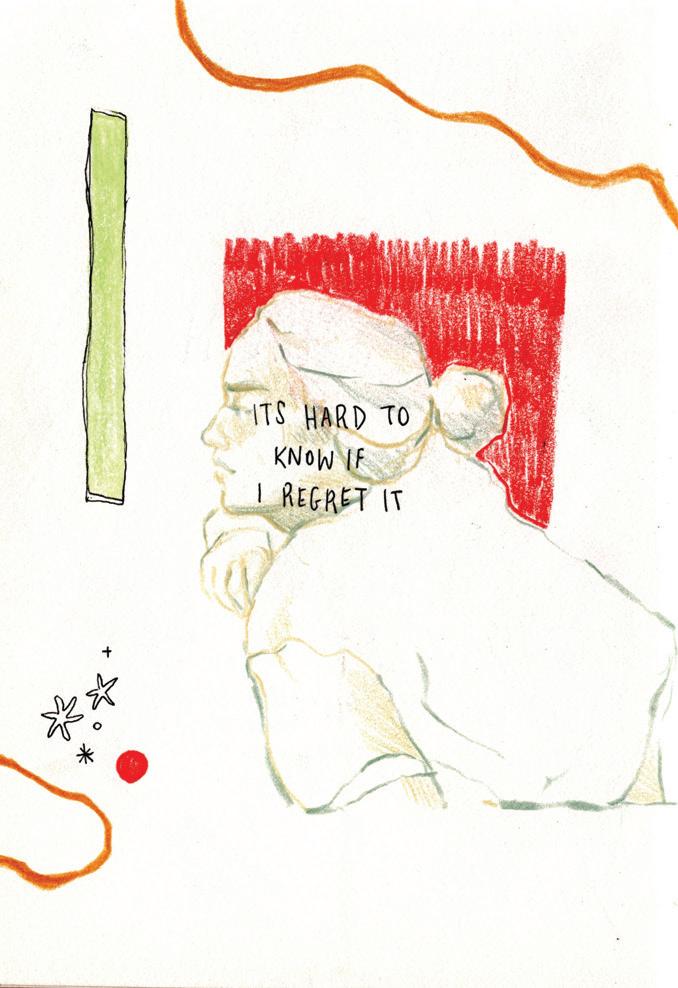


I thought you lacked emotion
You didn’t think of me at all
